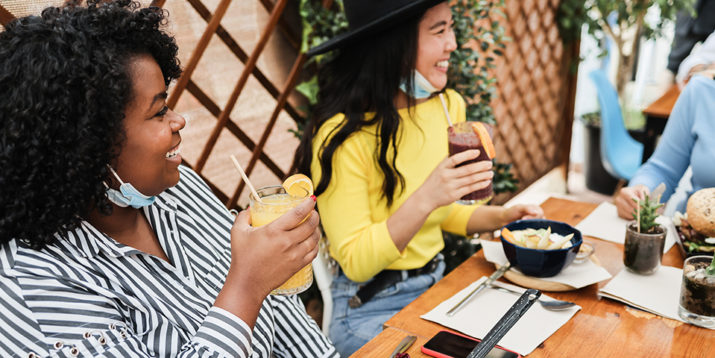How to Ease Back Into Post-Pandemic Life

As more and more states open up for post-pandemic life, it’s natural to feel uncertain about going back to “normal.”
“It is absolutely normal to feel anxious or have fears about venturing to public spaces and seeing people post-pandemic,” says Mayra Bedolla-Lopez, LMFT, a licensed marriage and family therapist with New Beginnings Counseling.
“In 2020, we were informed that doing so would put our lives in danger of a virus that could potentially be deadly to us and our loved ones. Now we have to reprogram our minds to the idea that we will be OK if we go outside,” she explains.
To help you cope with any unease about post-pandemic life, we spoke with mental health professionals who specialize in anxiety and social anxiety.
Keep in mind that their advice is for when federal and state officials say it’s OK to go back to “normal.”
1. Post-Pandemic Anxieties
Some common themes pop up in therapy sessions lately.
First, there’s the concern about contracting COVID-19 or spreading it to more vulnerable loved ones.
Second, especially for people living with social anxiety, “the fear of embarrassment is quite significant,” says Houston-based psychiatrist Jared Heathman, M.D. “There’s a feeling of being ‘out of practice’ when it comes to social interactions. This heightens the sense that something will go wrong.”
Others also worry about how people will perceive them if they choose to wear a mask.
2. How to Cope With Social Anxiety
The best way to deal with social anxiety is to ease back in.
- Start with people you are close to, comfortable with, and trust, suggests Melissa Boudin, PsyD, a licensed psychologist and clinical director of Choosing Therapy, and pick an activity that feels safe. Maybe you go for a walk with one person.
- Once you’re confident doing that, then engage in an activity that brings very mild discomfort from a social perspective, Boudin says. Maybe you see three friends at once or try something indoors, like a meal when a restaurant is less crowded. “Practice your coping skills like meditation, deep breathing, positive self-talk, and progressive muscle relaxation prior to the activity,” Boudin recommends. If anxiety pops up during the activity, use these skills or talk with your friends. They likely will completely understand and can help you in the moment.
- Continue doing things that are slightly more uncomfortable until you feel confident going about “normal” life.
And if talking to others is a particular concern, you’re not alone.
Zoom, Facetime, and phone calls aren’t the same as the everyday interactions we have outside the home.
Practice with a trusted friend or therapist, Bedolla-Lopez suggests. “It’s normal, and over time it will get better, especially if pre-pandemic you were able to converse without feeling awkward,” she adds.
3. How to Cope With Other Anxieties
Beyond how you’ll interact with others, you may worry about your post-pandemic life commute, hitting the gym, or putting on work clothes again.
The good news is that you can prepare yourself for all of this.
Your commute
If you use public transit, if you can, leave earlier or later than normal to try to avoid crowds.
You could also go for a practice commute ahead of time, Bedolla-Lopez suggests:
- Set your alarm, and when you wake up, use relaxation tools like meditation or music to help shift your mind for the trip.
- When it comes time for the real commute, “give yourself extra time in the morning and throughout your day, as it will take time to find your rhythm again,” Bedolla-Lopez says.
Your gym or group fitness class
First, determine if you feel safe going back. You may prefer to keep doing the online workouts you did during the pandemic.
If you are ready, decide what time of day not only fits your schedule but may also be less crowded, Bedolla-Lopez suggests.
Then go once a week for about 30 minutes, continuing to work out at home the rest of the week.
Add days and time at the gym as you feel comfortable.
Your work clothes
Business on top, pajamas on the bottom isn’t going to fly at the office.
Take this as an opportunity to clean out your closet, keeping only what feels good and what fits.
“Give yourself grace if your clothes don’t fit the same or aren’t as comfortable as they once were,” Boudin says.
Then find ways to make your work outfits comfortable, like stretchy pants or comfortable shoes.
“It can help to buy a few pieces to add to your wardrobe so that you look forward to wearing work clothes again,” Bedolla-Lopez adds.
Lastly, if you show signs of anxiety, consider seeking out the support of a licensed therapist or psychologist.
Many still offer online sessions and can help you work through your specific challenges with post-pandemic life.



